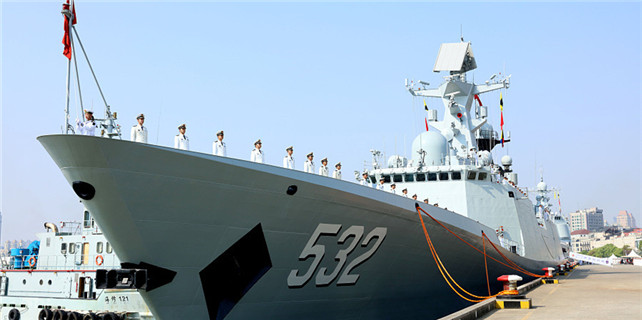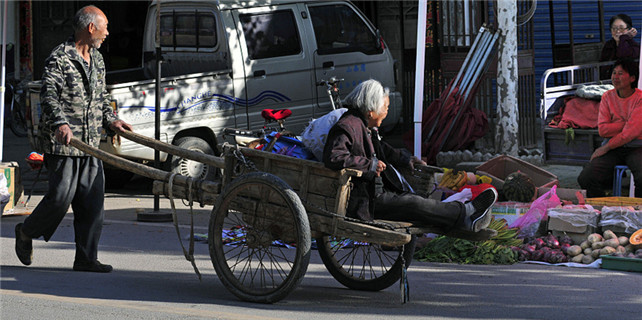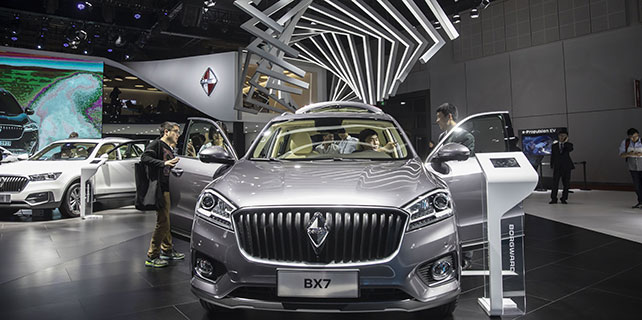Construction machinery in huge demand
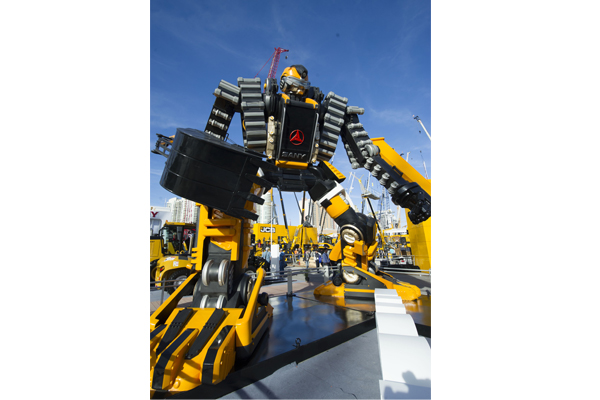 |
|
An excavator in the form of a Transformer character, made by Sany Heavy Industry Co Ltd, is on display at the Conexpo in Las Vegas in March. [Photo/Xinhua] |
Production executives such as Pu Mingju of Sany Heavy Industry Co Ltd are a busy lot these days as China's construction machinery sector, which makes heavy equipment like concrete pumps, excavators and cranes goes from strength to strength.
Improving infrastructure and mining sector activities are bolstering end-user demand for construction machinery.
Consequently, Pu's team is churning out truck-based concrete pumps faster than at any time in the past five years.
Pu said his team has been expanded since January to cope with extra work shifts necessitated by a 100 percent year-on-year surge in monthly orders.
Similarly, construction machinery such as excavators and crawler cranes are in heavy demand because of short supply, said Chen Jing, assistant president of Sany, China's leading heavy machinery maker.
According to Chen, sales of Sany excavators reached a record 3,600 units in February, three times the number a year earlier. Sales of concrete machinery, crawler cranes and hoisting machinery, too, tripled year-on-year, he said.
The construction machinery segment underwent a nearly five-year recession recently and started a recovery in its business cycle last September.
The China Machinery Industry Federation monitored a consortium of 25 local firms and said they sold 14,530 excavators in February alone, up 298 percent from last year. The uptrend can be seen sector-wide, not just in one subsegment.
Most of the excavators were sold to western and eastern parts of the country. A research note by Suzhou-based Soochow Securities Co Ltd shows that in January, eastern provinces and cities ordered1,436 excavators, up 77 percent from a year ago.
Industry experts attributed the sales surge to several factors.
Wang Jinxing, deputy secretary of the CMIF, said improving economic conditions, together with the country's latest endeavor to promote the public-private partnership or PPP model, boosted the construction machinery sector.
Since the end of 2014, the government has sought to promote the PPP model and attract private resources to develop public utilities, with a goal to benefit both the capital market and social development.
As for the mining industry, arise in coal and iron ore production, driven by growing prices, created new demand for heavy equipment, said Chen Qihua, vice-president of Caterpillar Inc, the largest US machinery manufacturer.
He said mechanical equipment's life cycle is roughly between six and 10 years. So, some owners are replacing their old equipment with new machines now.
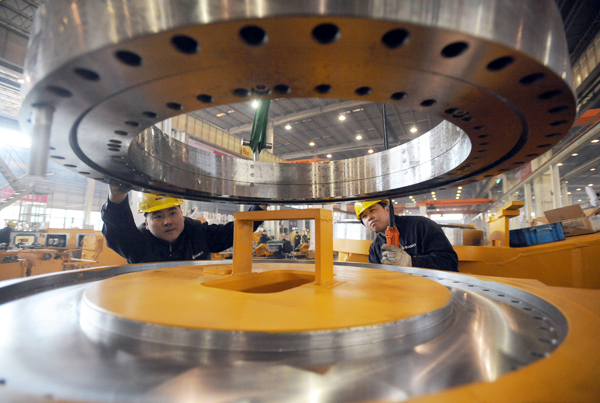 |
|
Engineers at work at a workshop of Sany in Shenyang, Liaoning province. [Photo by Zhang Wenkui/For chinadaily.com.cn] |
Asked whether the current uptrend can be sustained, Chen Qihua said the industry is projected to reach peak demand in the first half of 2017.
"Construction machinery sales typically peak in February, March and April, contributing almost 40 percent to 50 percent to the industry's annual revenue," he said. "We expect the growth rate will start to slow down in the third quarter to a normal level, as the effect of a low comparison base fades."
Thanks to the latest shakeout, companies with mediocre returns and short track records closed down, said Chen Jing. The number of excavator producers operating in China has declined from 100 to 20 within five years, he said.
Chen Qihua said it's a good sign that the industry, which used to attract hot money, has cooled down after years of market adjustments. The phasing out of inefficient companies can "ensure the sustainable development of the industry", he said.
CMIF data show the industry will likely display a high level of market share concentration this year. The top 10 players by sales are estimated to account for 79 percent of the industry revenue in 2017. Currently, Sany accounts for 20 percent of industry revenue.
- SXU's lab construction plan to go ahead
- Railway construction contract dispute between Dalian-based Tongyang Building Material Co, Ltd and China Railway Construction Bridge Engineering Bureau Group Co, Ltd
- Engineering construction contract dispute between Wuzhishan-based Zhaotong Real Estate Development Co, Ltd and Hainan-based Jinsheng Construction Engineering Co, Ltd
- Xinjiang to invest 14.4 billion yuan on airport construction
- Engineering construction contract dispute between Nanjing Zhongshan Garden Construction Group Co, Ltd, Tangshan-based Fengnan Construction and Investment Co, Ltd, Tangshan Fengnan District People’s Government and Tangshan Fengnan District Finance Bureau





